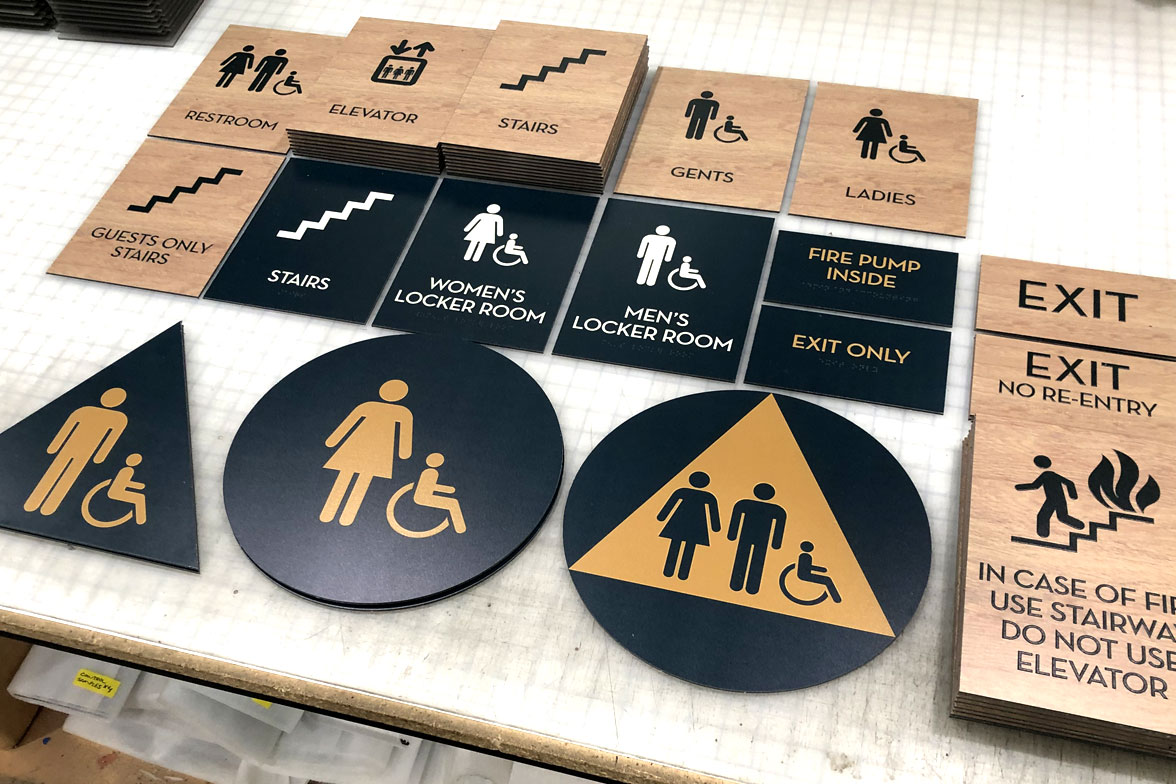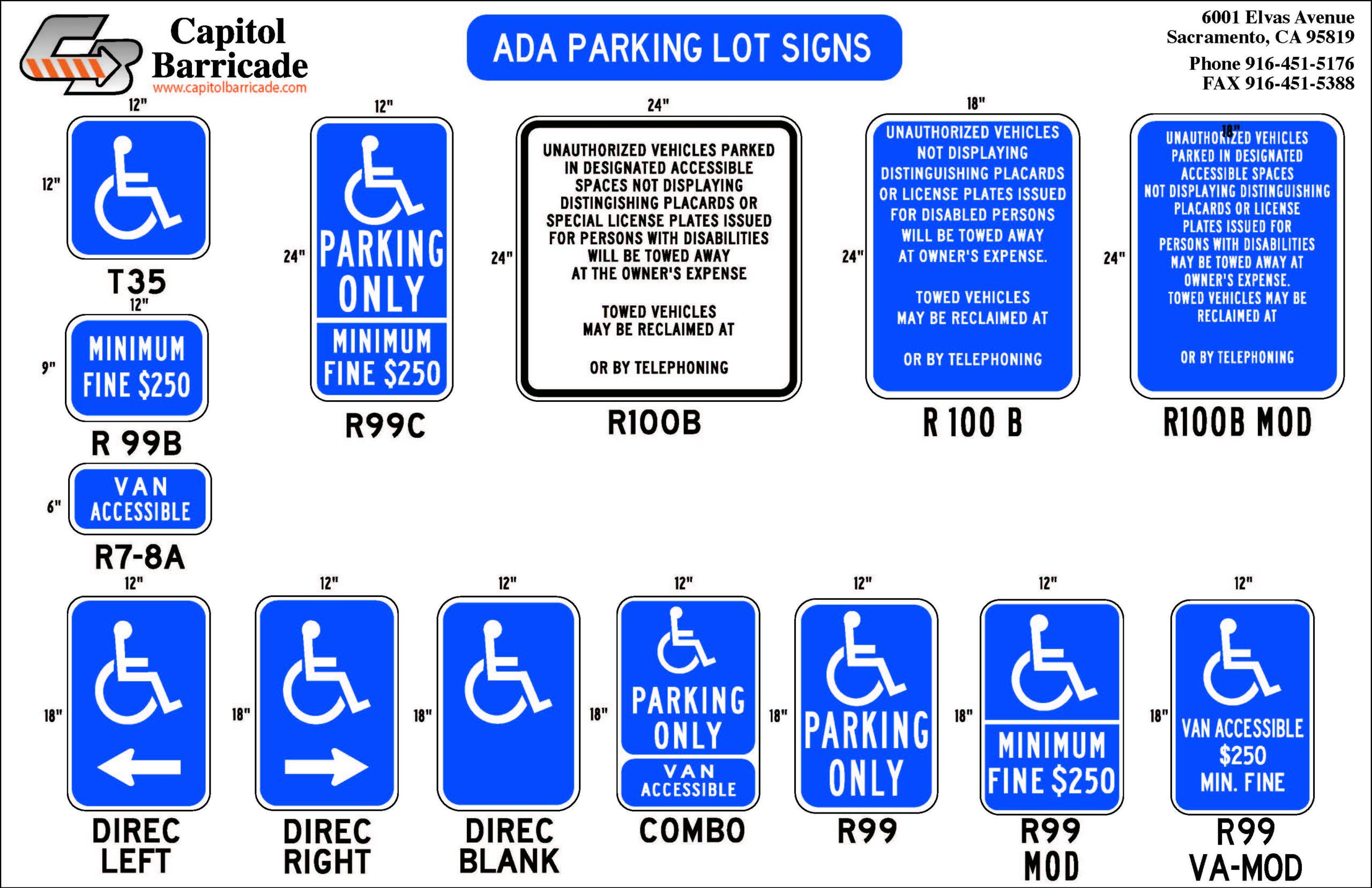Recognizing the Rules Behind ADA Signs
Recognizing the Rules Behind ADA Signs
Blog Article
ADA Signs: Ensuring Access and Compliance in Public Spaces
ADA signs plays an indispensable function in guaranteeing availability and compliance within public spaces, substantially contributing to an inclusive setting for individuals with impairments. As we explore the nuances of ADA signs, from responsive functions to develop ins and outs, it's vital to consider just how these components integrate to copyright the legal rights of all individuals.
Relevance of ADA Signage
In modern culture, the value of ADA signs expands beyond mere conformity with lawful mandates to symbolize a dedication to inclusivity and availability for all people. These signs are crucial in creating environments where individuals with impairments can navigate public rooms with the very same convenience and independence as those without handicaps. By providing standard and clear details, ADA signage makes sure that everyone can access centers, services, and information without barriers.
The relevance of ADA signs depends on its capability to improve the quality of life for people with handicaps by promoting equal gain access to. It gets rid of the challenges that may or else prevent their ability to participate totally in neighborhood life. Additionally, these indications function as noticeable signs of a company's commitment to variety and equality, mirroring wider societal worths that promote the civil liberties and dignity of all people.
Additionally, ADA signs plays an important role in public safety. By assisting people to departures, bathrooms, and various other important centers, it makes certain that all people, no matter of physical capability, can evacuate securely throughout emergencies. In summary, ADA signs is not just a regulative demand however a powerful tool for fostering a equitable and inclusive society.
Crucial Element of Conformity

Positioning is important; signs have to be set up in locations that are quickly noticeable and obtainable. Usually, signage needs to be mounted between 48 and 60 inches from the ground to make certain ease of access for both standing and wheelchair individuals. Responsive components, such as Braille, are crucial for people with visual problems, giving essential details in a non-visual format.
High-contrast colors between the text and background are necessary to improve readability for people with low vision. The ADA mandates details comparison ratios to make certain quality. Furthermore, character size is a key consideration, with minimal height needs determined by the checking out range to make sure readability from different angles.
Layout Considerations for Access
Creating easily accessible signage needs a meticulous approach to guarantee it fulfills the needs of all customers, specifically those with handicaps. The dimension of the message is similarly important, with ADA standards suggesting a minimal height based on watching distance to make sure clarity.
Contrasting shades in between text and background are necessary for visibility, particularly for individuals with aesthetic impairments. A high contrast proportion aids distinguish the text from its history, improving readability under numerous illumination problems. Additionally, responsive aspects, such as Braille and elevated characters, are essential for people who are blind or have reduced vision. These elements must be situated at a constant height and position to guarantee simple gain access to and understanding.
In addition, the positioning of signage plays a significant role in ease of access. Indicators must be installed in locations that are easily obtainable and unhampered. Ensuring that signs is placed at suitable heights and angles makes it possible for all users, including those making use of wheelchairs, to engage with them successfully.
Typical Errors to Stay Clear Of

Another widespread error is the wrong positioning of signs. ADA standards specify precise elevation and area needs to make certain that signs are obtainable and easily visible by all people, consisting of those using mobility devices. Overlooking these guidelines not just interferes with access yet additionally risks non-compliance with legal standards.
In addition, inadequate comparison in between message and history is a frequent oversight. Sufficient contrast is crucial for readability, particularly for people with reduced vision. Developers often pick colors that are aesthetically attractive yet do not have the essential comparison, providing the text challenging to determine.
Last but not least, some developers fall short to incorporate tactile elements, such as Braille, which are vital for individuals who are blind. Omitting these functions not only causes non-compliance with ADA regulations however also home limits access for a section of the population that depends on tactile information.
Future Trends in Signs
Developments in modern technology and raising understanding of inclusivity are shaping the future fads in signage design. As culture ends up being extra aware of diverse requirements, the assimilation of smart technologies into signs is getting grip. Digital signs, as an example, is progressing to include interactive functions and real-time updates, which can be vital in giving dynamic details in public spaces. These indications often incorporate touch displays or gesture-based controls, allowing individuals to informative post navigate content tailored to their specific demands.
An additional emerging trend is the usage of increased reality (AR) to improve user experience. AR-enabled signage can overlay electronic info onto the physical atmosphere, offering aesthetically damaged people with auditory or haptic responses. ADA Signs. This modern technology not only boosts access however likewise produces an engaging experience for all users
Sustainability is additionally a substantial factor influencing signs patterns. Green materials and energy-efficient illumination services are being focused on to line up with international environmental goals. Developments in products science are leading to the growth of even more weather-resistant and resilient signs.
Conclusion
ADA signs plays a vital function in ensuring access and compliance within public rooms by incorporating tactile aspects, high-contrast shades, and strategic positioning. The adherence to ADA standards not just helps with safe navigating for individuals with specials needs yet also indicates a company's devotion to diversity and inclusivity. By preventing common mistakes and welcoming future fads, public rooms can remain to advance these values, making certain that the civil liberties and dignity of all people are respected and upheld.
ADA signage plays an important function in assuring ease of access and compliance within public areas, considerably contributing to a comprehensive environment for people with impairments. As we explore the nuances of ADA signage, from responsive features to develop complexities, it's critical to think about just how these aspects integrate to support the legal rights of all users.In modern society, the relevance of ADA signs expands past mere conformity with legal mandates to symbolize a dedication to inclusivity and accessibility for all individuals. By supplying standard and clear information, ADA signs guarantees this content that everybody can access centers, solutions, and information without obstacles.
ADA signs plays a vital role in ensuring ease of access and compliance within public spaces by including responsive components, high-contrast shades, and critical placement. (ADA Signs)
Report this page